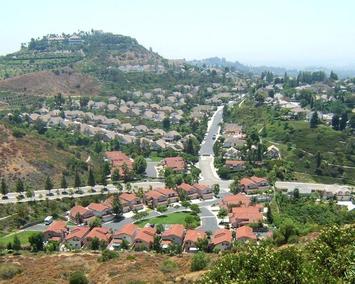
I have been a New Yorker for over a decade now, but I have spent the past few months in the Hampton Roads region of Virginia, since it’s a little easier on our family during the pandemic. Locals joke that it’s a “suburb of nowhere,” and it’s true that the region may lack some of the density and sizable cultural institutions that define the New York experience—24/7 amenities, robust public transit, and the sidewalk ballets. But the tidewater region is anything but an isolated wasteland, and spending time here has been absolutely lovely.
There are still art galleries, great restaurants, options for family activities, nightlife (such as it is during a pandemic), and recreation. There is also considerable racial, ethnic, and cultural diversity, too. In these suburbs, I already know my neighbors and community members and I have had numerous encounters along the street during long pandemic inspired walks. More than 200 parks and outdoor areas are within an hour’s drive and most are free. There is ample space and life is far more affordable, and even easy compared to New York. As such, it is impossible to declare that either dense urban center or sprawling Virginian region is a better urban form in which to live; rather, they are simply different with various attributes and tradeoffs.
So, when publications like The New Republic run stories with headlines “The Suburbs Are Still Hell,” I find this unnecessarily polarizing. Living here in Virginia—and I have lived in other urban and suburban areas for over two decades now—is anything but hell. Perhaps to someone born, raised, and having never left a neighborhood like Park Slope in Brooklyn or the Upper West Side of Manhattan, suburban life may appear hellish. But this simply does not square with views of many Americans. Not only does my experience say otherwise, but statistics about suburbia are quite clear: Americans like the suburbs and want to be here.
More specifically, the New Republic piece summarizes new work about the problems of American suburbia but relies on old tropes about the lack of “organic social interaction” including “existential despair” and alienation. The problem is that while some writers may feel social lives do not exist outside of cities, that simply is not true.
Data from AEI’s Survey on Community and Society—conducted before the COVID-19 pandemic—shows that socialization patterns were as high in the suburbs as city centers and that Americans rated suburbs as very desirable places to live. For instance, when respondents are asked about their satisfaction with the number of friends they have in their neighborhood, 72 percent of city dwellers and 72 percent of suburbanites say they are satisfied. This number ticks up for small-town residents (74 percent) and those in rural areas (75 percent).
Relatedly, when asked about how well one knows one’s neighbors, 56 percent of urbanites say the know them well, but so do 48 percent of those in suburbs. When asked about feeling isolated from others, 37 percent of city dwellers say sometimes or often, which is not very different from suburbanites who feel lonely 39 percent of the time. Rural Americans felt the most isolated at 42 percent—which is again only a handful more than in suburbs. These are minor differences and if urban life is the benchmark, suburban life is anything but isolated and anti-social.
What about overall quality of life? In this case, while the numbers are still close, suburbanites show the highest overall satisfaction, with 87 percent rating their area as a good or excellent place to live. For city dwellers, it was 74 percent. (Small town and rural residents were in between those two.) Moreover, comparable numbers survey respondents in cities, suburbs, and towns all respond that local amenities—place to buy groceries, be social and entertained, and have a meal or a drink—are close by; only rural Americans are truly missing easy access to these local institutions. So, it is hard for me to accept statements that the suburbs are hellish, empty, and anti-social places considering huge numbers of Americans rank them a good places to live with ample resources and find that they are socially happy there.
Read the rest at The Dispatch
Samuel J. Abrams is professor of politics at Sarah Lawrence College and a visiting scholar at the American Enterprise Institute.
Photo credit: Toksave via Wikimedia under CC 3.0 License.












